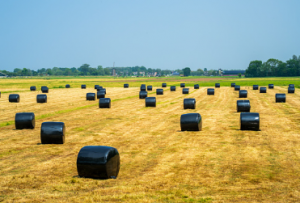Silage wrap is an agricultural implement used to wrap bales in plastic. There are several types available. These wraps can be biodegradable, durable, easy to use, and cost-effective. Listed below are the pros and cons of these products. If you’re a farmer looking for a new silage wrap, read on to find out more! We also cover how to choose the right one for your farm. You’ll be glad you did!
Biodegradable
 There are several advantages to using biodegradable https://unipak.com.au/silage-wrapsilage wrap. In addition to being cheaper, it’s also more environmentally friendly. One company, Trioplast, has created a premium silage stretch film called Triowrap BIO. This product is made from fossil-free green polyethylene derived from sugarcane. It offers similar properties as its petroleum-based counterpart but is also made from renewable feedstocks.
There are several advantages to using biodegradable https://unipak.com.au/silage-wrapsilage wrap. In addition to being cheaper, it’s also more environmentally friendly. One company, Trioplast, has created a premium silage stretch film called Triowrap BIO. This product is made from fossil-free green polyethylene derived from sugarcane. It offers similar properties as its petroleum-based counterpart but is also made from renewable feedstocks.
First, biodegradable https://unipak.com.au/silage-wrap silage wraps are significantly cheaper than conventional plastic film silage wrapping. The product is typical $1.30 less expensive. Even though silage wraps are already cheap, a biodegradable wrap is better for your money and the environment. For more information, visit the company’s website. After all, you’re already saving money! But biodegradable silage wraps are better for the environment, which means less plastic is going into the landfill.
Durable
To store silage, you should choose a durable wrap that can withstand adverse conditions. Although reusable silage wraps are less durable than those made of paper, they are easier to clean and can last for many years. If you have a large quantity of dry feed, you should use double the amount of silage wrap. For more information, see our silage wrap buying guide. You can save money and time by buying high-quality plastic wrap.
Premium silage film is ideal for preserving silage in bales, as it prevents fermentation. It is available in various colours and thicknesses and comes with either a cardboard or plastic core. It can be found in black, pink, or green. It will also keep the bale airtight. It would help if you chose a wrap compatible with your baling machinery. It is crucial to choose a durable wrap that is long-lasting and is made to meet your needs.
Cost-effective
A cost-effective https://unipak.com.au/silage-wrap is a must-have item for any dairy farmer’s equipment. To store the crop correctly, it should be at least 40% moisture, or the crop will spoil. Silage wrap should have at least six layers to lock in the feed value. These six layers of film can reduce the cost of plastic and wrapping time. Cost-effective wraps are available for production, from crop harvest to storage.
If you have many bales to wrap, consider a three-layer silage wrap, such as AgriSeal. This product is manufactured by Norflex Inc, a Wisconsin-based company founded in 1994 by Arne Anderson. It is highly dependable and tear-resistant and comes with a 12-month field warranty. The initial capital investment is half of the cost of an inline wrapper.
Easy to use
Using the right kind of wrapping materials is essential when storing your silage. The right type of wrapping should be able to protect your bales for several months. This article will cover two kinds of wrappers: the inline wrapper and the individual wrapper. Inline wrappers use the bale’s weight to apply pressure to the plastic material around the bale. Individual wrappers pull the plastic around the bale while the platform spins. Both wrappers create an airtight seal around the bale, so you don’t have to worry about a leaky bale.
Environmentally friendly
In recent years, agricultural manufacturers have been urged to produce more environmentally friendly products, including silage wrap. While most agricultural products are made from plastic, using biodegradable silage wrap could change that trend. While plastic and rubber have long been a concern in the agricultural industry, biodegradable silage wrap is expected to revolutionise farming. Using the biodegradable silage wrap will allow farmers to monitor their forage quality while reducing the plastic waste.
